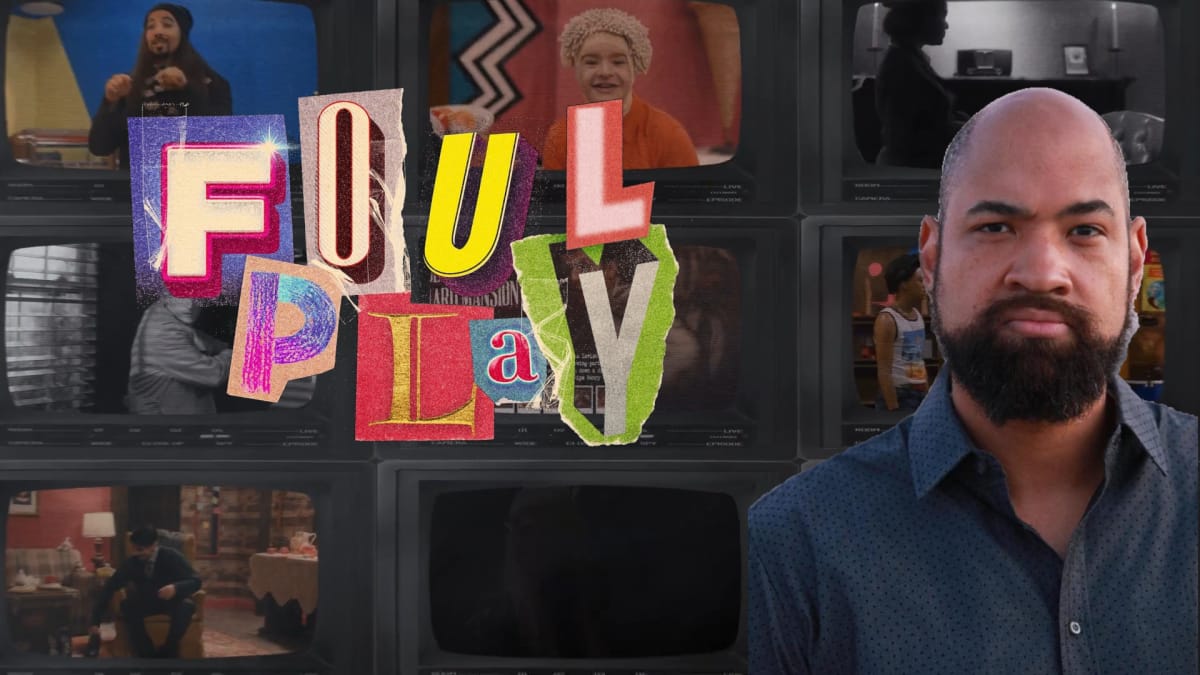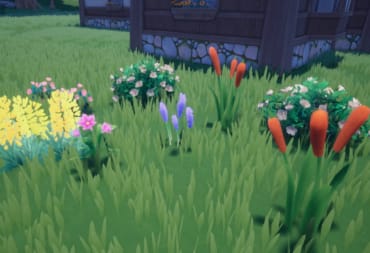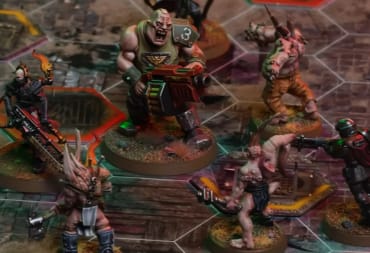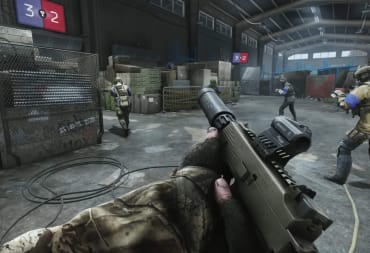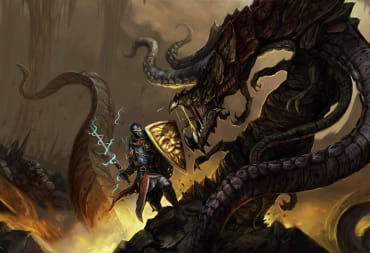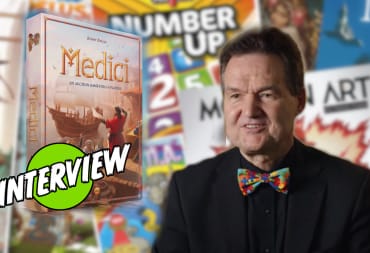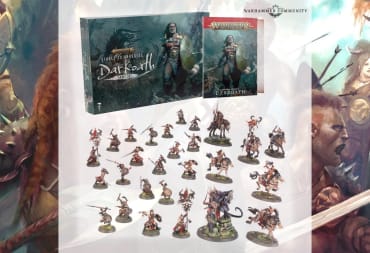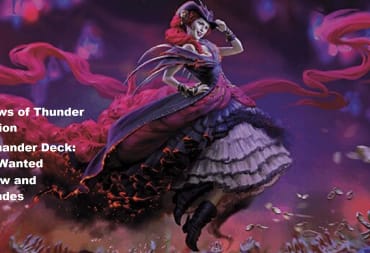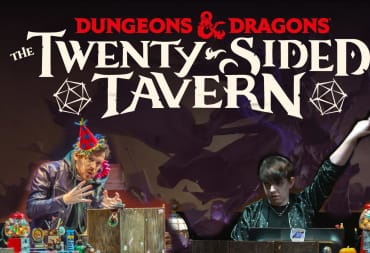Foul Play is a new interactive murder mystery show debuting on April 21 that allows viewers to solve the mystery and identify a murderer. Each character has been provided a back story and possible motive, and it will be on the viewer at home to toggle between different camera angles and try to decipher the true culprit. A good murder mystery needs a good story, and we were lucky enough to sit down with one of the show's writers, B. Dave. Walters (Dungeons & Dragons: A Darkened Wish, Shadow of the Red Rage) to talk about how this came to be, what it was like in the writer's room, and what players should be looking for as they head into episode one on April 21.
"I think it was almost more of the actual play aspect of [my career] bringing these characters to life on camera in a way that you will actually care about," Walters explained when asked how he originally got involved with Foul Play.
Each episode of Foul Play has a runtime of approximately 90 minutes, and it's during that time that players will be introduced to a handful of characters, witness a murder, and understand enough about each character to be able to deduce by the end who the murderer is. It was Walter's goal, along with his fellow writers Brennan Lee Mulligan (Dimension 20) and Arti Gollapudi (Upright Citizens’ Brigade) to make each character as "real and living and breathing as quickly as possible."
Setting a Scene in Foul Play
Across the five episodes, each is its own contained mystery with its own theme. The first case that drops will be a traditional dinner party murder mystery titled "The Murder At Vanguard Mansion," but as the weeks progress there will be other themed episodes for reality TV, a spoof of Mr. Rogers Neighborhood, and a high-fantasy episode. For Walters, this was his first time writing a murder mystery.
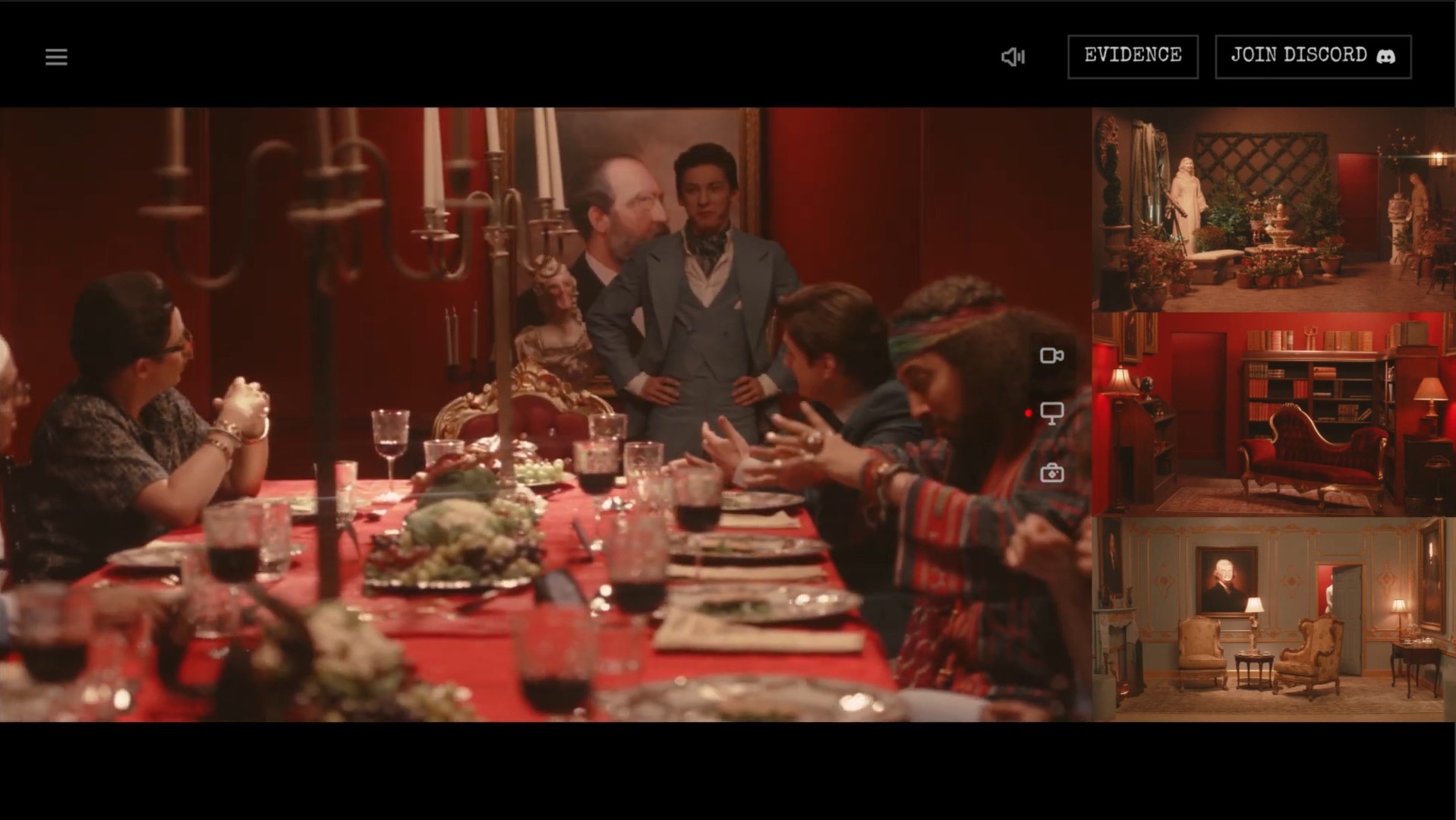
Walters explained that the intention with each of these episodes is that viewers will be able to "discern who is the culprit by the end." Being a multicamera show where it's in the power of the viewers to decide who or what they're looking at, there's an added level to the game where you need to be watching the right people.
This also means for those interested in showing Foul Play to others, or are interested in rewatching the show, there are many reasons to rewatch it, whether you're just following the culprit to see how many clues you missed or simply watching characters you didn't see much of in your initial watch to learn more about them.
When creating "The Murder At The Vanguard Mansion," the writers aimed to create a very traditional murder mystery. "Everyone's at the table, the lights go out, the lights come up, and someone's dead. Ahhhh!" Walters let out a playful high-pitched yell as he acted out the episode's hook. Each day would start with getting a feel for an idea that grabbed them, and then they would chase that lead to its logical conclusion.
When talking about how they structured creating each of the murder mysteries, Walters explained it was always the setting that would come first. Then it was "What is the crime?" and then "Who are the most interesting people?". Aside from the broad homages to the genres that these settings take place in, the writing team didn't pull much inspiration from classic works of mystery, instead opting to figure out how to take a known setting and make the events and characters surprising. With five mysteries to fill, they wanted to ensure that there wouldn't be able of the same twists or events repeating from episode to episode.
The setting that Walters found moved him and the other writers the most was "Mr. Roberts' World of Imagination." "That one more than any of the others we thought, 'This really is something,' we could take this and make a whole play," he said.
The writers found that after landing on the concept of a Mr. Rogers parallel where murder could occur, they then had to figure out what was the driving force of that darkness. In pulling threads and building the character out, it ended up far more narratively dense than originally expected.
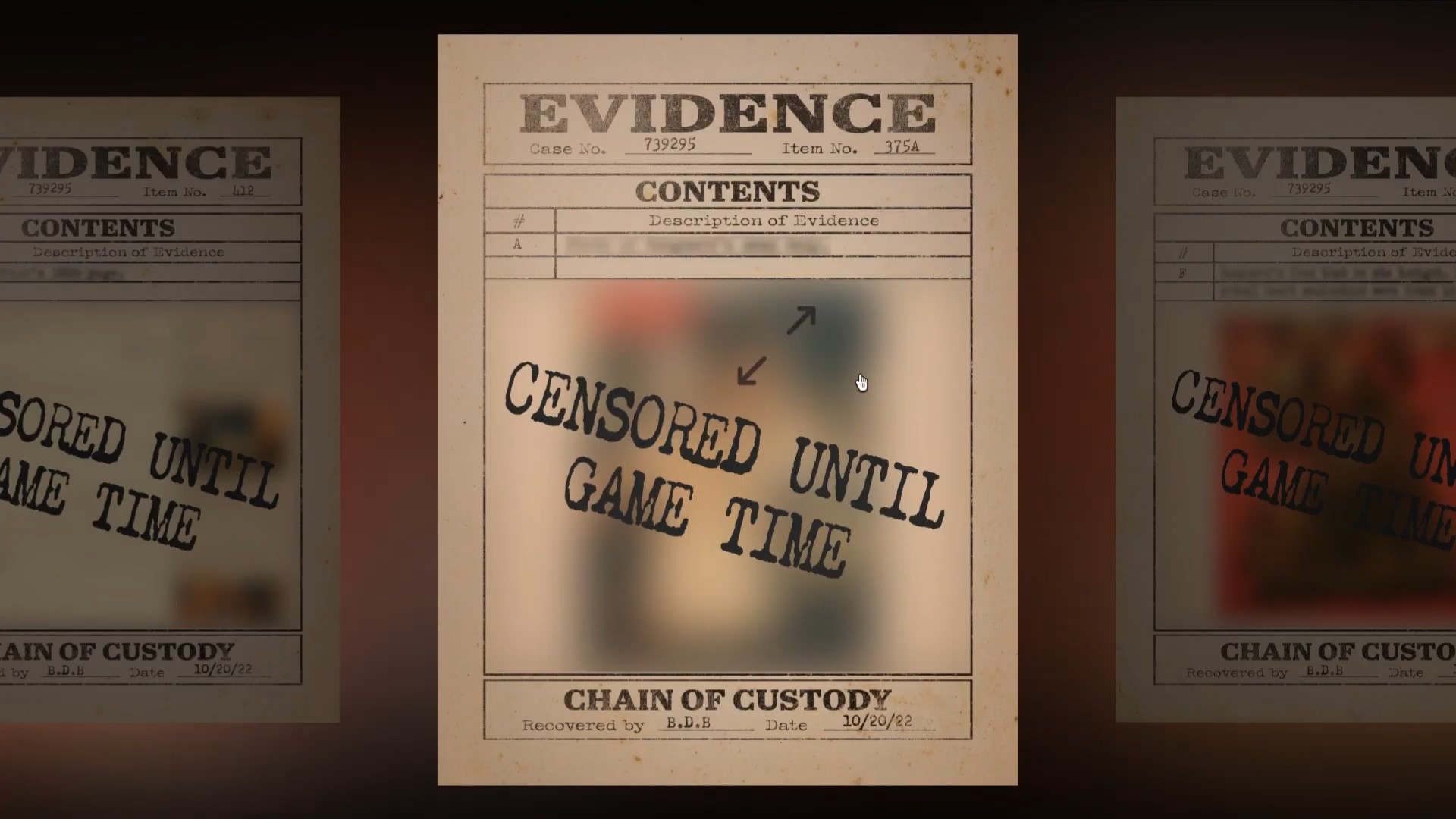
In talking about the process of writing and development of each of the five stories that will be released over the next two months, Walters did confirm that there had been a sixth story already written. Why it wasn't made, the reasons were too varied to speculate.
Of the episodes that had been shot, I asked if Walters had a particular character that he wished that he could have stepped into the shoes of, and without missing a beat Walters was able to point towards the Paladin character in "The Dark Curse of Savion Sunguard."
"I think the Paladin in 'The Dark Curse of Savion Sunguard,' that one in particular would have spoke to me. [...] Obviously that one's near and dear to my heart being the high-fantasy one," he said. "I think Brennan (Lee Mulligan) and I especially, it meant something to us to make that one happen. I think the how done it in the high-fantasy one will appeal a lot to fantasy people because it's not the kind of thing you could have done in a traditional murder mystery. I will say, this I don't think is a spoiler, one of the things we talked about is, 'If we're doing a high-fantasy story, well resurrection magic is a big deal [...] or 'Speak With Dead,' you could just ask who kills you? We had to have an answer for that."
How Was Each Character Crafted for Foul Play?
Walters explained that the creation of each character was different from crafting a TTRPG character in that "it is a game [...] but it's not a game like D&D with rolling dice. What we created in the writer's room was the character's [...] means, motive, and opportunity that these brilliant performers then brought to life."
Each of the actors that fans will see on the screen will have received the equivalent of character bullet points, the murderer knows they've done it, and the victim is aware of their oncoming demise. But Walters' aim would be to provide what information each character might need to get across. How exactly that was brought up was up to the discretion of the actor.
To use a TTRPG analogy, it's like we pre-generated the characters and then they went and played them. -- Walters
Holding up his iced coffee, Walters explained, "I'm drinking coffee right now, maybe the corpse has coffee stains all over it. You'd have to say, 'Make sure over the course of the show that you pick up and drink coffee where people see you doing it.'"
At the start of each session, the writers would look back at previous sessions to make sure there were no plot holes or instances where a different character would give off too similar a clue. As the writers were brainstorming and actively adding onto ideas rapidly they'd return to make sure they hadn't done something to close out a loop like mention that "the coffee craft was unspillable."
Knowing that there could be different clues presenting themselves at totally different locations, I did inquire as to whether any safeguards had been put in place to make sure two important clues didn't occur at once. Walters told me that while there wasn't anything strictly put in place to ensure two important beats wouldn't happen at once, there was a "world before the murder, and a world after the murder" that almost functioned like an act structure.
Actors would receive some slight direction to get across some aspect of their character in a certain act, such as letting you know a character uses an inhaler, but beyond that, it was "a living, breathing, alive thing." Walters credits the amazing professionalism of the cast for managing to deliver their performances and get across those elements of their characters in a recognizable way for the viewer.
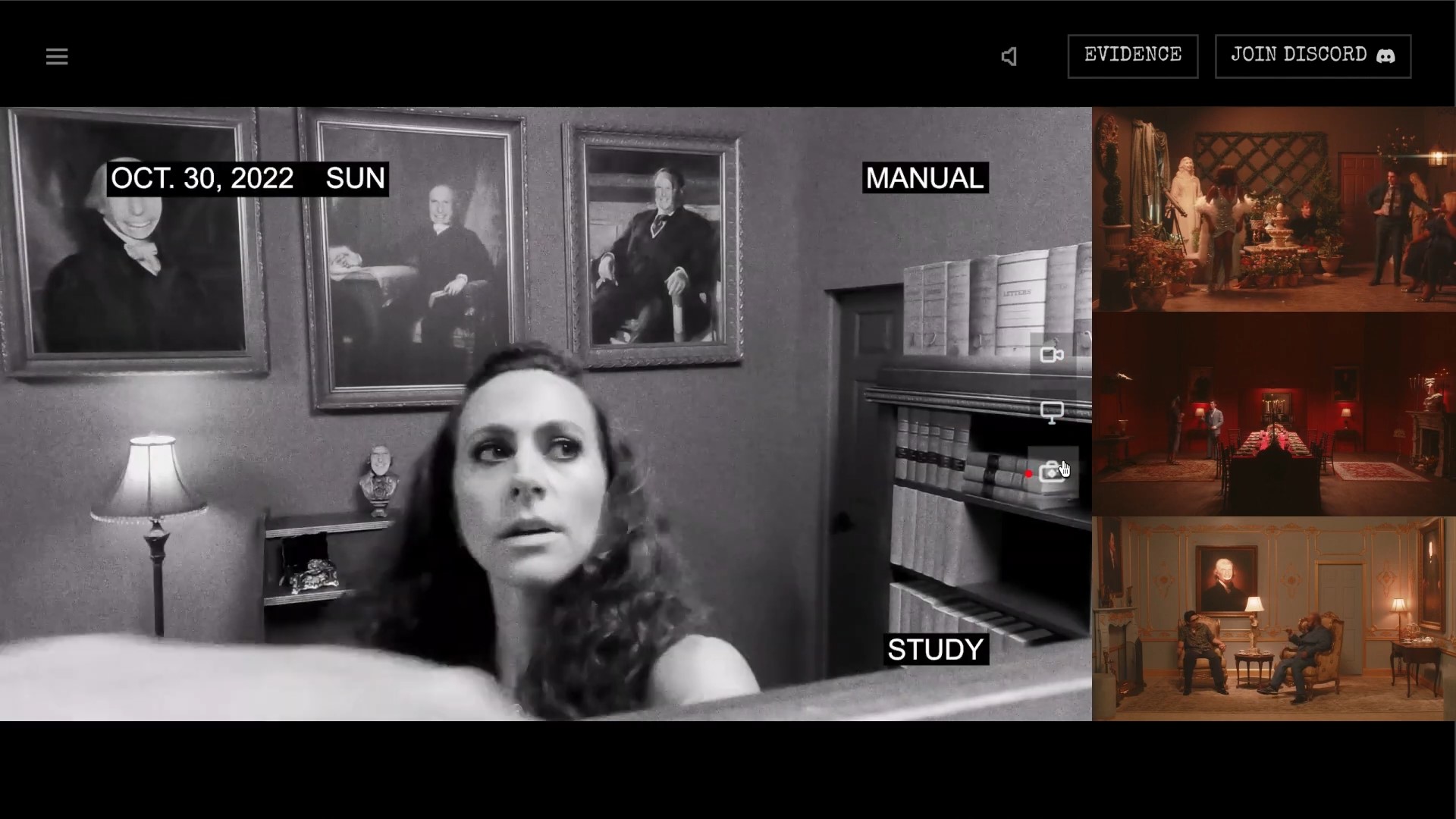
As characters were being written, there were some whose actors were already known, but plenty still needed to be cast. When Walters got to see the final casting he was impressed with the number of roles that were cast outside of what you'd normally expect.
"It was pretty ingenious, that they took some of the archetypes and turned them on their heads," he said.
This casting mirrors the writers' intention to have an aspect of the story that's familiar to a fan of the genre, whether it be a setting or character archetype, and just as you think you know what you're going to see there's a left turn to keep you guessing.
The Technology That Powers Foul Play
The format for Foul Play was first experimented with by producer Andrew Barth Feldman in his Broadway Whodunit series. In Broadway Whodunit, players would stay in character as they moved between different Zoom call rooms, while Foul Play has instead had a whole interactive system built around it that while you're focused on one room you can still keep an eye on another.
I don't think Brennan and Arte had [written] any such thing because for lack of a better word I don't think any such thing had been done. -- Walters
Being a fan of immersive theater and immersive experiences, Walters commented that it's incredible what has been done with Foul Play.
"I'm very very very hopeful and enthusiastic for how people are going to see it and experience it," Walters said. "I think it's going to be a bit of a game changer. If I had my wish, this would become popular and we'd get to do it live like some sort of breakout thing, but I think it's something that's going to inspire a lot of creativity from people in the future too."
TechRaptor would like to thank B. Dave Walters for talking with us about the writing process for Foul Play. You can get more information about Foul Play here.
Have a tip, or want to point out something we missed? Leave a Comment or e-mail us at tips@techraptor.net
